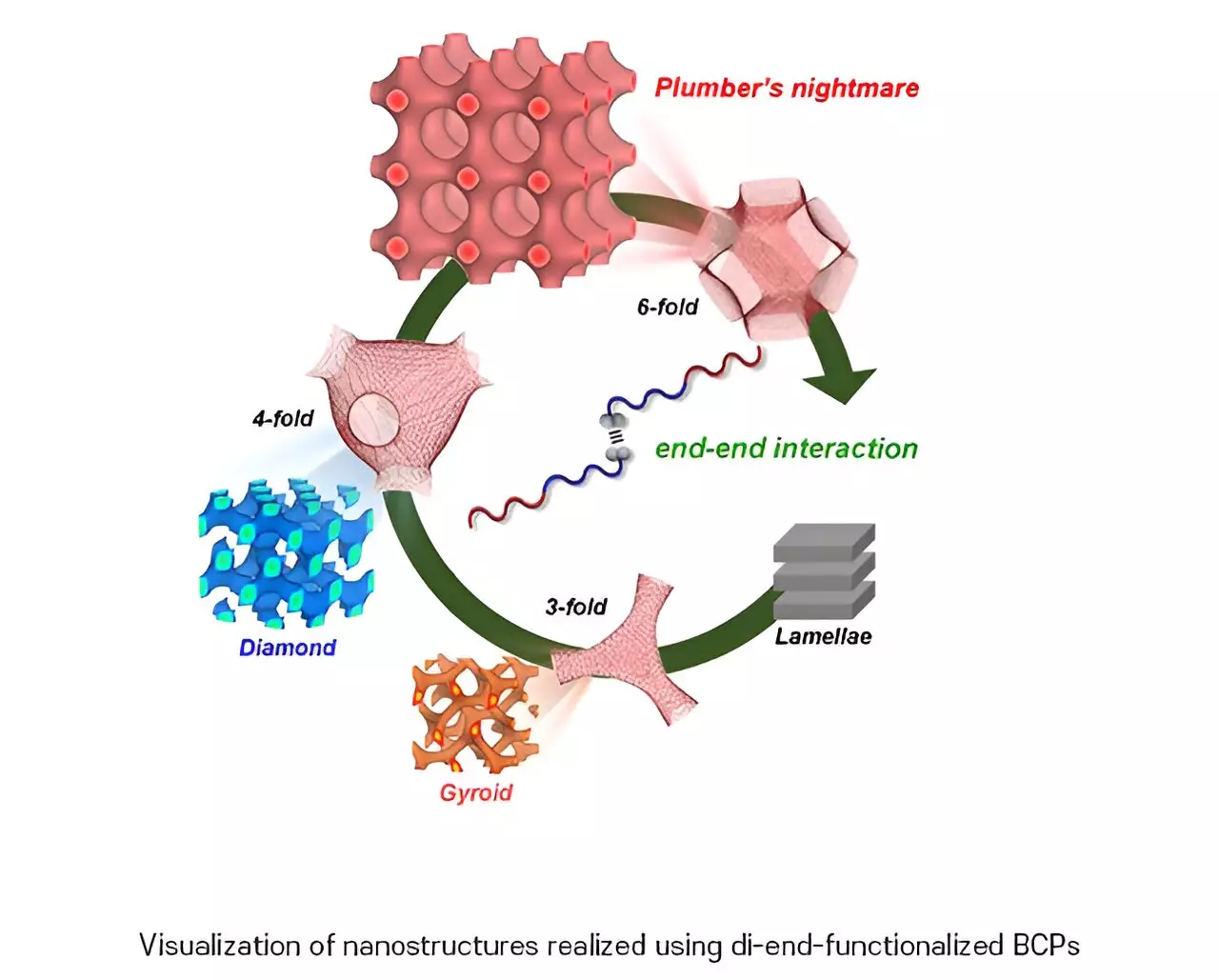The structure known as the plumber’s nightmare has long been an enigma for researchers and a source of fascination for those in academic circles. This complex configuration, where all exits converge inward, seemed unattainable and almost impossible to replicate. However, a research team from Pohang University of Science and Technology (POSTECH) has recently embarked on a groundbreaking journey to uncover the secrets of this unique structure. Led by Professor Moon Jeong Park and Ph.D. candidate Hojun Lee from POSTECH’s Department of Chemistry, they have successfully brought to life nanostructures of block copolymers (BCPs), previously thought to exist solely in the realm of imagination.
Traditionally, research on BCPs has focused primarily on the main polymer chains. However, the team at POSTECH decided to explore the less explored, namely the inconspicuous chain ends, which make up less than one percent of the polymer. By linking different molecules to each end of the polymer chain, they created di-end-functionalized BCPs. This ingenious technique resulted in robust mutual attraction among the polymer chain ends, causing all the polymer tails to coalesce inward. This remarkable achievement marked the realization of the plumber’s nightmare structure, a world-first accomplishment. It also opened doors to the production of a range of previously elusive BCP structures, including gyroid and diamond structures.
The significance of this study lies not only in the materialization of complex BCP structures but also in the understanding that stability can be achieved when powerful forces exist at the ends of the polymer chain. Regardless of adjustments made in BCP polymer composition and the main chain’s chemical properties, intricate structures can be stably realized. This discovery has far-reaching implications for future research in developing diverse composite-structure polymer nanostructures.
The plumber’s nightmare structure, with its distinctive channel formation, holds great promise for applications in various fields such as semiconductors and medicine. Its unique optical and mechanical traits make it stand out among other nanostructures. While previous studies have explored the optical and mechanical properties based on BCP structures, the plumber’s nightmare has always remained a hypothetical entity. This research not only proves its existence but also opens the door for further investigations into its potential applications.
The achievement by the research team at POSTECH marks a new era in material science. By pushing the boundaries of what was deemed impossible, they have demonstrated that the seemingly inaccessible can be brought to life through innovative thinking and meticulous experimentation. The successful materialization of the plumber’s nightmare structure paves the way for future breakthroughs in the field of polymer chemistry and opens doors for hitherto unexplored applications.
The research conducted at POSTECH has unraveled the mysteries of the plumber’s nightmare structure, a complex configuration that has fascinated researchers for years. By exploring the less explored chain ends of BCPs, the team successfully realized this unique structure, along with other previously elusive BCP formations. This groundbreaking achievement not only expands our understanding of polymer nanostructures but also highlights the importance of pushing boundaries and thinking outside the box in scientific research. The future holds great promise for the applications of these intricate structures, and this research sets the stage for further advancements in material science.


Leave a Reply